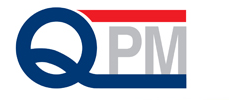Metal Detectors ideal for the food, pharmaceutical & packaging industry
Ever since LOMA SYSTEMS® was founded in 1969, the company has worked very closely with both food manufacturers and retailers around the world to deliver leading inspection solutions. As a result, LOMA® has an unrivaled level of experience and expertise in the practice of effective metal detection within food industry production lines.
In the food production industry, metal is one of the most commonly found contaminant materials in food. Metal can be introduced at all stages of processing of food, as it is most commonly used in the construction of machinery, handling equipment and ancillary utensils. A metal detector for the food industry can help ensure the safety and integrity of a wide range of unpackaged, packaged or bulk goods, by identifying metal contaminants during processing or packaging and helping to ensure that they do not enter food that we eat. As part of a HACCP program, metal detection systems can be utilised to provide compliance with food safety standards (GFSI, BRC, IFS), retailers’ code of practice, legislation and industry guidance.
For the pharmaceutical industry, please see our Pharmaceutical Metal Detectors.
Types of Contaminants
There are three main groups of metallic contaminants that a food metal detector can sense:
- Ferrous
- Non-Ferrous
- Stainless Steel detection depends on the magnetic or conductive properties of the contaminant
The ability for a conventional metal detector used in the food industry to detect metallic contaminants depends upon their conductivity and magnetic permeability:
- Ferrous metal contaminants are both magnetic and conductive and are easily detected
- Although they are not magnetic, Non-Ferrous contaminants are good conductors and can be detected relatively easily
- Stainless Steel foreign bodies are the most difficult to pick-up as they are usually non-magnetic and a poor electrical conductor. The ability to detect stainless steel is also hindered when the product is wet or has a high salt content
If there are other types of contaminants (glass, calcified bone, ceramics, stone) to be detected, then an X-ray inspection system for food will offer enhanced detection capabilities.
Types of Metal Detector for the Food Industry
- Search Heads
- Conveyor based Systems
- Pipeline for Pumped Products
- Vertical Fall or Gravity Feed
All of these systems must be of a hygienic design specific to the particular type of food or beverage being inspected, and to suit the cleaning methods.
Foil-Packed Products
Foil tray products that are packed in metal, in aluminium or wrapped in aluminium foil will normally be passed through a conventional metal detector system before they are packed. When this is not possible, products packed in foil must go through a specialist ‘ferrous-in-foil’ detector, such as the Loma IQ3 Ferrous-in-Foil system.
Alternatively and the most diligent is to consider the additional benefits of using an X-ray inspection system for food at this point.
Where should I put a food metal detector?
Metal detectors can be used throughout the food production process in order to protect consumers by detecting metallic contaminants and preventing the contaminated food from ending up on retailers’ shelves. With packed products, a food metal detector can be placed at the end of line for a final product inspection of metal contaminants.
Food metal detectors can also be used in line to protect other machinery that is downstream. A metal detector is normally installed before the machine to detect metal particles in order to help prevent damage to processing equipment, which can cause downtime and costly repairs.
Food Industries
LOMA has installed food metal detectors across many different industries, having over 120,000 installed worldwide. We have developed an extensive library of food industry applications and case studies.
Examples of food industries that we have experience in include:
- Bakery or Baked Goods
- Dairy, Milk, Yogurt
- Fruit and Vegetables
- Ready Meals
- Fish and Seafood
- Sushi
- Snacks and Biscuits
- Candy, Sweets or Confectionery
- Meat
- Poultry
- Cereals and Grains
- Beverages, Drinks, Juice or Water

